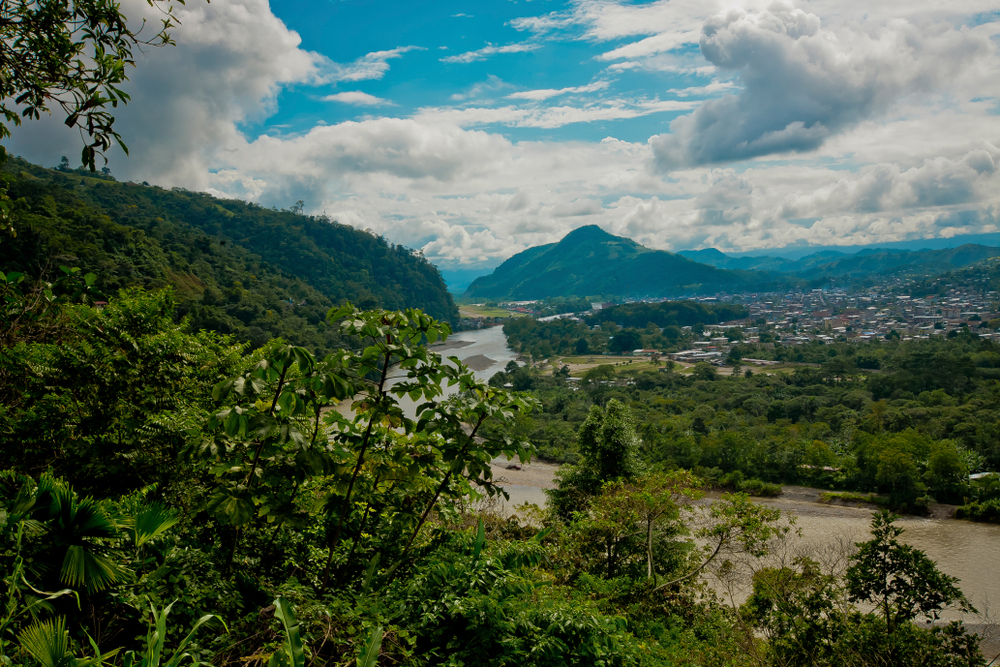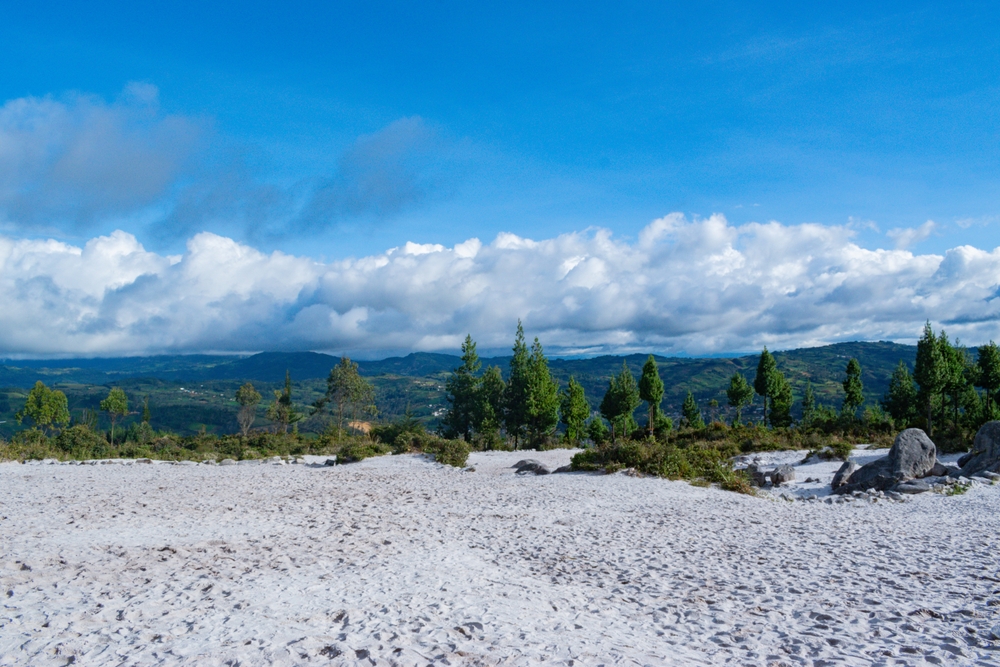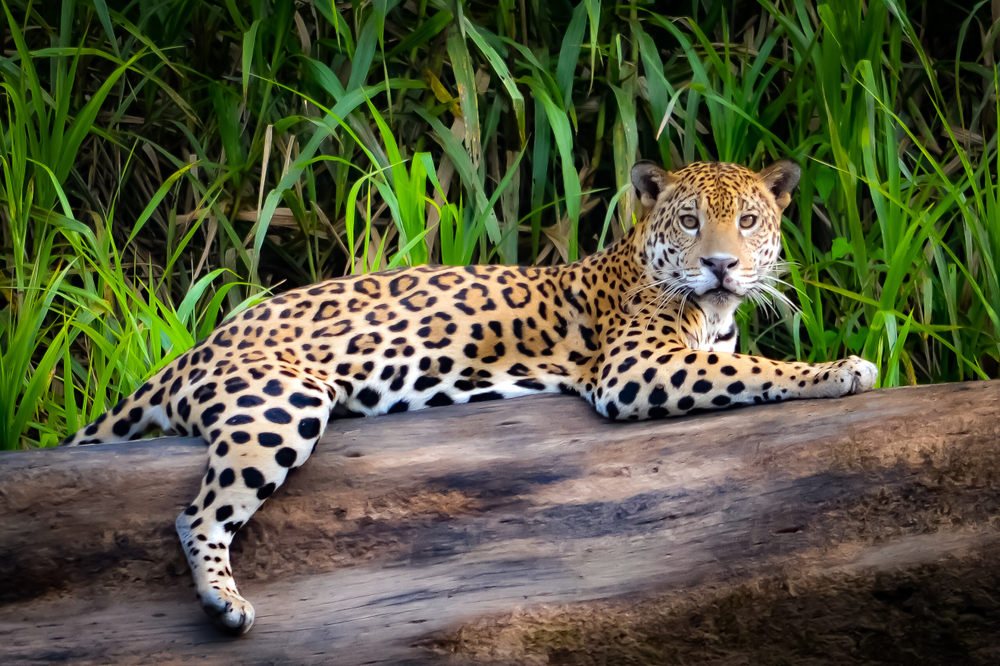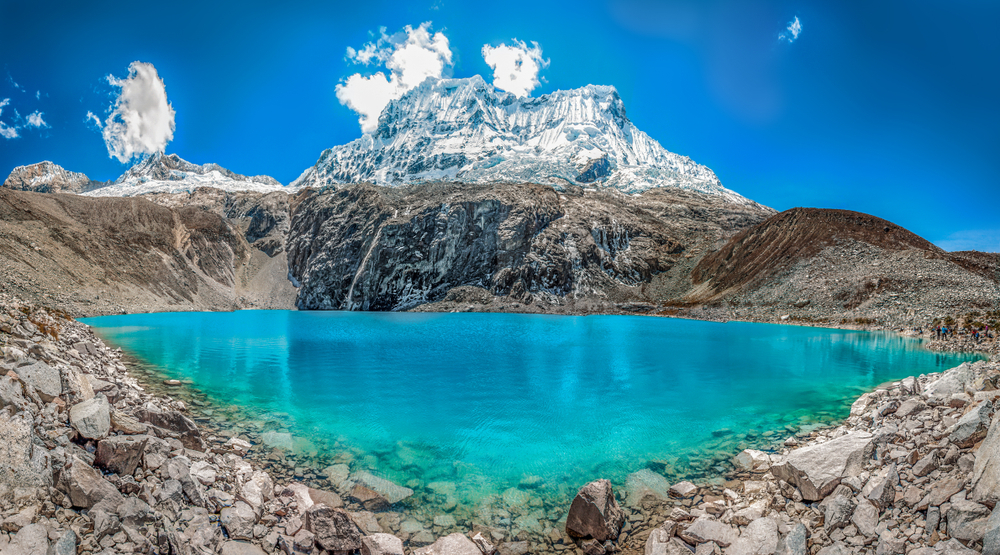Tingo María Overview
Tingo María National Park, known locally as Parque Nacional Tingo María, is a protected area in central Peru, covering approximately 69.24 square miles (179.89 square kilometers).
Located in the Huánuco Region, this national park is known for its stunning mountainous terrain, lush tropical forests, and the iconic limestone formation called La Bella Durmiente, or “The Sleeping Beauty.” This mountain range, resembling a reclining woman, is one of the park’s most well-known natural landmarks.
The Huallaga River runs through the park, creating an essential water source that nourishes its rich ecosystem. Tingo María National Park is a gateway to the Amazon rainforest, featuring a mix of montane and lowland jungle that supports an extraordinary variety of plant and animal species.
The landscape of the park is characterized by steep limestone hills, deep caves, and dense rainforests filled with diverse flora. The vegetation is typical of the Peruvian Amazon, with towering ceiba trees, mahogany, and a variety of palms. The park’s dense undergrowth is home to orchids, ferns, and bromeliads, adding to the vibrant greenery.
The Cueva de las Lechuzas, or “Cave of the Owls,” is another famous feature of the park, a large cavern inhabited by oilbirds (Steatornis caripensis), which are nocturnal fruit-eating birds that use echolocation to navigate in the dark. The cave is also home to bats and other cave-dwelling creatures, making it a fascinating destination for visitors.
Tingo María National Park is a biodiversity hotspot, home to an incredible variety of wildlife. Among the mammals found in the park, visitors may spot jaguars, pumas, ocelots, and spectacled bears, though these elusive creatures are often difficult to see. More commonly encountered are smaller mammals like agoutis, armadillos, and anteaters.
The birdlife in the park is particularly rich, featuring species such as toucans, parrots, and harpy eagles. The presence of oilbirds in the Cave of the Owls is one of the park’s most unique ornithological attractions. Reptiles and amphibians, including various species of frogs, snakes, and lizards, also thrive in the humid environment.
The park’s rivers and streams are home to an array of aquatic species, including fish and amphibians, contributing to the overall ecological diversity of the region.
The park is a popular destination for eco-tourism, attracting visitors interested in exploring its unique geological formations and diverse ecosystems. Hiking trails lead to key locations, including viewpoints offering breathtaking panoramas of the surrounding jungle.
The Cave of the Owls is a must-visit site, drawing those interested in both wildlife and geological wonders. Birdwatching is another major attraction, with the park providing excellent opportunities to observe rare and exotic species. The Huallaga River also offers opportunities for boat tours, allowing visitors to experience the park from a different perspective while enjoying the surrounding scenery.
Conservation efforts in Tingo María National Park have focused on protecting its rich biodiversity from deforestation and illegal hunting. The park faces challenges from human activities such as agriculture, logging, and encroachment, which threaten the delicate balance of its ecosystems.
However, ongoing conservation programs, community involvement, and ecotourism initiatives have contributed to the park’s preservation. Sustainable tourism practices have been promoted to ensure that visitors can enjoy the park’s beauty without causing harm to its environment.
Local conservation groups and government agencies work together to monitor and protect the park’s flora and fauna, helping to maintain its status as a valuable natural treasure of Peru.














































































